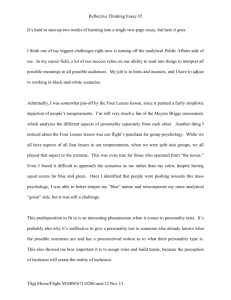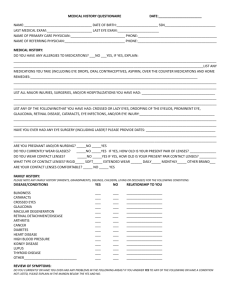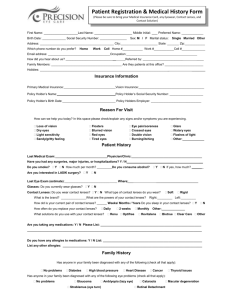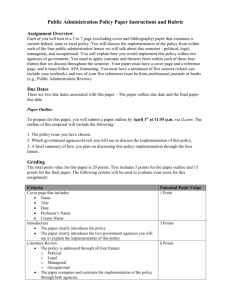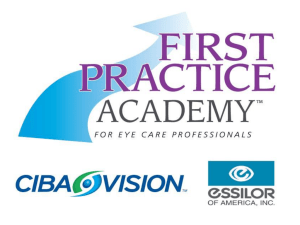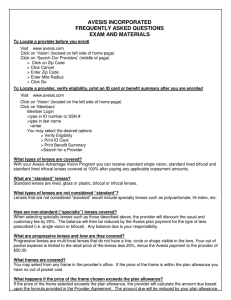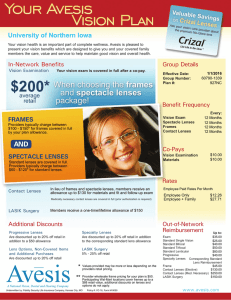Social Media - Temple Fox MIS
advertisement
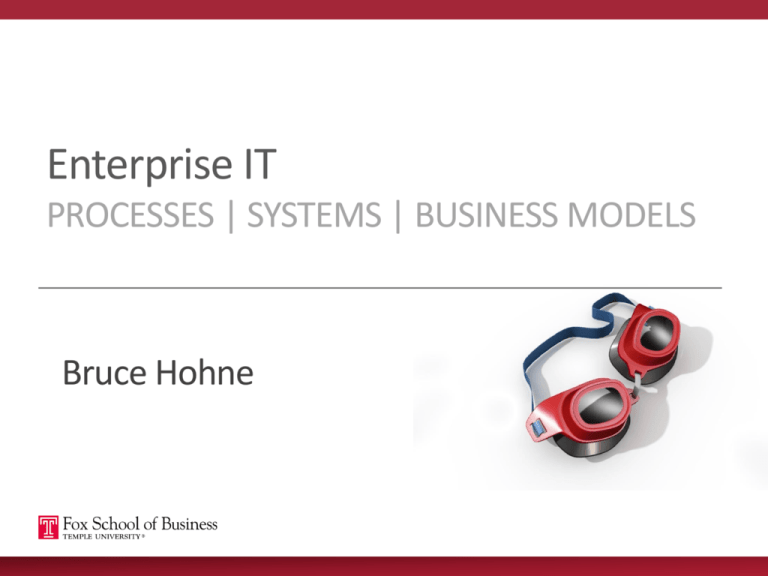
Enterprise IT PROCESSES | SYSTEMS | BUSINESS MODELS Bruce Hohne ENTERPRISE ARCHITECTURE 1. Organizations are dependent on organizational systems. 2. Organizational systems automate and/or change key business processes. 3. An enterprise architecture is a roadmap of key organizational systems Enterprise architecture Systems Processes LENSES SYSTEMS Purpose – its reason for existence Boundary – where it begins and ends Components – the pieces that make up the system Environment – things outside the system boundary Inputs – objects and information that enter system Outputs – objects and information that leave system A system with five subsystems Source: Alter (2006) LENSES BUSINESS PROCESSES Source: Alter (2006) a structured, measurable set of activities designed to produce a specific output ... It implies a strong emphasis on how work is done within an organization, in contrast to a product focus’s emphasis on what... A process is thus a specific ordering of work activities across time and space, with a beginning and an end…Processes are the structure by which an organization does what is necessary to produce value ... Source: Davenport (1993) MORE BUSINESS PROCESSES Source: Alter (2006) LENSES INFORMATION SYSTEM What is an Information System? IF SSNO <> 9 Char THEN Error END IF Hardware Software Networking People Data Business Processes A set of interrelated components that collect (or retrieve), process, store, and distribute information to support decision making and control in an organization Source: Laudon, K., & Laudon, J. Management Information Systems. 8/e LENSES INFORMATION SYSTEMS - LEGACY Decision Making Managerial Operational Manufacturing Payroll Sales force automation Strategic Accounting Sales Personnel Electronic invoicing Finance Human Resources Distribution … INFORMATION SYSTEMS – ENTERPRISE APPLICATIONS TRENDS Web 2.0 Social Media Analytics Consumer IT Corporate IT BI ERP Google Wyeth CRM Amazon Web Services DM KM SM Amazon Apple Facebook DIGITAL BUSINESS MODELS Grow Save Money INFORMATION SYSTEMS ERP – Enterprise Resource Planning DM – Digital Marketing SM – Social Media • Enterprise wide systems that automate and integrate key organizational processes such as sales, purchasing, etc. (e.g., SAP) • An emerging discipline in Marketing which integrates the application of ecommerce, social media, and direct sales (e.g., Google Ads). • Organizational and consumer applications that focus on processes that have to do with interactivity (e.g., Facebook) KM – Knowledge Management • A concept and set of systems/processes to retain, transfer, and leverage organizational knowledge (e.g., Lotus Notes) CRM – Customer Relationship Management • A specific system that automates direct sales, sales force management, and customer relationship processes (e.g., Salesforce.com) BI – Business Intelligence • AKA Analytics / Big Data • A set of capabilities and processes to get value from organizational data LENSES ENTERPRISE ARCHITECTURE COMPONENTS ERP CRM Devices Network Applications ENTERPRISE ARCHITECTURE LEGEND Data ENTERPRISE ARCHITECTURE EXAMPLE Source: Collabri Group LLC ENTERPRISE ARCHITECTURE EXAMPLE Source: IBM ENTERPRISE ARCHITECTURE EXAMPLE Source: Quest4Web ACTIVITY: ENTERPRISE ARCHITECTURE Process • Form groups (count off 1 – 2 – 3, 1 – 2 – 3, ...) • As a group, discuss the following • 2-3 ± minutes discussion per question • One person reports out the group’s answer Questions • What is the architecture of each eportfolio on the FOX MIS Community Platform? • What did you learn about enterprise architecture from this activity? LENSES REFLECTION A. What would you like to remember about enterprise architecture? B. What do you have questions about? LENSES SYSTEMS THINKING VERSUS PROCESS THINKING Process Thinking • A series of steps and flows • Decompose Systems Thinking • Collection of processes and technological components • Feedback loop • Synthesize ACTIVITY: SYSTEMS THINKING 1. Please stand and for the duration of the exercise. 2. You are not allowed to talk or use hand signals! 2. Each person will silently choose two other people in the room as their points of reference. 3. Stand in a place which is equidistant from your 2 points of reference. 4. Don’t reveal who your points of reference are to the others . 5. It doesn't make any difference how far apart you are – they key is to be equidistant from both your points of reference.
